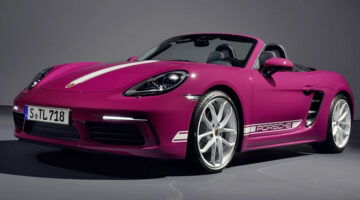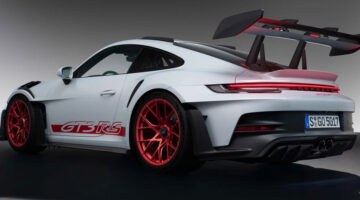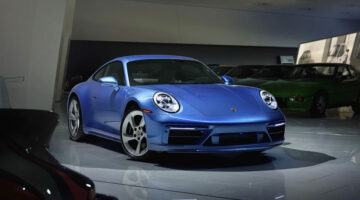Ride and handling
You’ll be pleased to know that Porsche hasn’t been as dramatic with changes to the Cayman’s chassis as it has been with the engine. The delicate and immersive handling that the Cayman is famous for still exists.
For a start, the 718 isn’t too big. With space on the road you have a greater freedom over where you place the car, and you’re able choose your line into and around corners. Sounds like a small point, but as cars get bigger it’s one that’s increasingly important.
Everything about the 718 is well considered, whether it’s the ergonomics and seating position or the weight of the steering and the pedals. It’s simply a satisfying car to use, even when being driven slowly. However, the chassis and the damping exudes quality, making the 718 even more entertaining and capable at higher speeds.
With most of the Cayman’s mass within the wheelbase there’s a real agility to the car. Combined with impressive grip, the 718 is capable of changing direction with ease. There is a slight hint of understeer as you begin to reach its limits, but rather than being frustrating it just helps you gauge how hard you are pushing.
If you spec the optional Porsche Active Suspension Management (PASM) it allows you to stiffen the suspension slightly. The softest setting feels fluid and supple allowing you to create an easy flow down a twisting road, while the stiffer setting adds a further degree of control and predictability to the Cayman that suits harder driving. Neither of the damper settings feel wildly inappropriate; the stiffer of the two isn’t too firm, and both settings have their place depending on the road or your attitude.
In terms of feel and connection, the 718’s electronic power steering cannot compete with Porsche’s hydraulic systems of old. But there’s enough detail transmitted through the chassis that the supplementary feel you get through the steering wheel is useful, but not actually necessary for you to be truly engaged with the car.
The extra torque from the turbocharged engines really allow you to indulge in the chassis’ balance and poise – possibly even more so than the old naturally aspirated flat-six. The throttle of the 718 has a greater influence over the car when in a corner, making it easier to push the rear axle closer to the limit of grip, really allowing you to manipulate the car’s attitude through a corner.
The GTS, with a little more power and a whole host of fancy chassis aids, is the 718 that feels most comfortable at these higher limits – feeling completely at ease as grip begins to gradually bleed away. Yet, at the same time, none of the Cayman’s low speed comfort, usability or practicality is compromised.
The old flat-six-powered Cayman had an equally broad range of talents, even if it did require slightly more commitment to take advantage of its on-limit balance. So despite less accessible torque, the sound, excitement and quality of the old engine made it the finer more satisfying car to drive more of the time. And, with an engine that matched the quality of the chassis, the old Cayman felt like a more resolved and desirable product.





